Tutorials / CONTACT SHEETS, ALL TUTORIALS

Contact Sheet #18
On this contact sheet, that was captured a few days ago during an advanced photography workshop around Hoi An, we will be discussing ways to make a static situation look dynamic. We will discuss how to analyze a scene before taking photos, how to add more elements to your frame to tell more interesting stories, and how creating a more dynamic rhythm through your image will make things more interesting.
Last week I went to photograph in the countryside of Hoi An with a client who was willing to go beyond the basics of composition. I knew from the locals that some people were busy harvesting the river clams that they can find in the hot summer days, so we decided to go visit this area.
As we arrived in the village, we could see the threatening clouds forming up on the horizon. I knew one thing then: it could either start raining and we would be going back home, or it could give us a lot of drama. Lucky for us, the drama is what happened.
As we arrived along the river, we spotted several groups of people busy in the shallow waters. We waved “hello” from afar, and took off our shoes for some relaxing foot mud bath. The water was very warm, and it felt really comfortable walking in there.
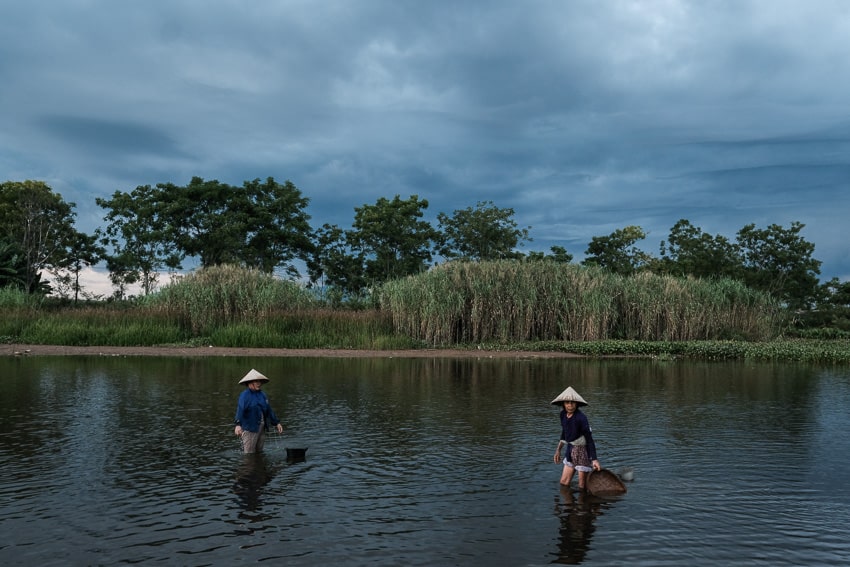
We instantly knew this was a very interesting scene, mostly due to the dramatic background that the dark clouds were creating.
As we arrived, I asked the women if it was going to rain. Doing small talks, as usual, talking about the weather and what they were harvesting. Instead of starting to shoot when you first enter a scene, try to spend some time getting to know your subject. Not only you will get more ideas for your composition, but you will be able to see how the scene is evolving, and you will make easier to create a connection with your subjects, making them feel more comfortable.
They were very happy to show us their catch of the day, some small river type of clams.
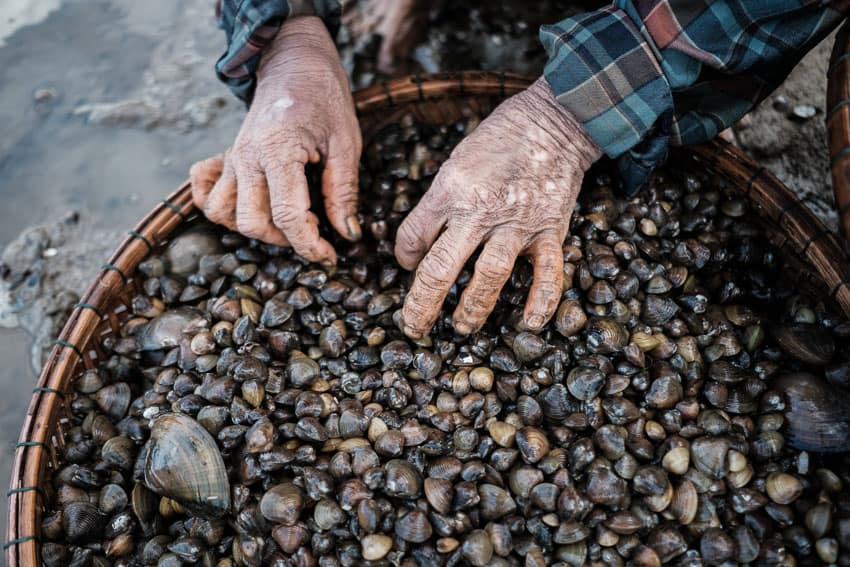
After breaking the ice with them, it was time to work on taking good pictures.
If you have been on one of our workshops you know the way we process the information in front of us. First, it is about the light, finding the best light and putting it at the right angle. Then, it’s about your background.
In this particular scene, what interested us the most was the dramatic background that the rain clouds were creating.
Because of the symmetry of the background, I started by placing one subject in the middle. This lady was being super friendly with us and she was the more chatty one, the reason why we were closer to her.
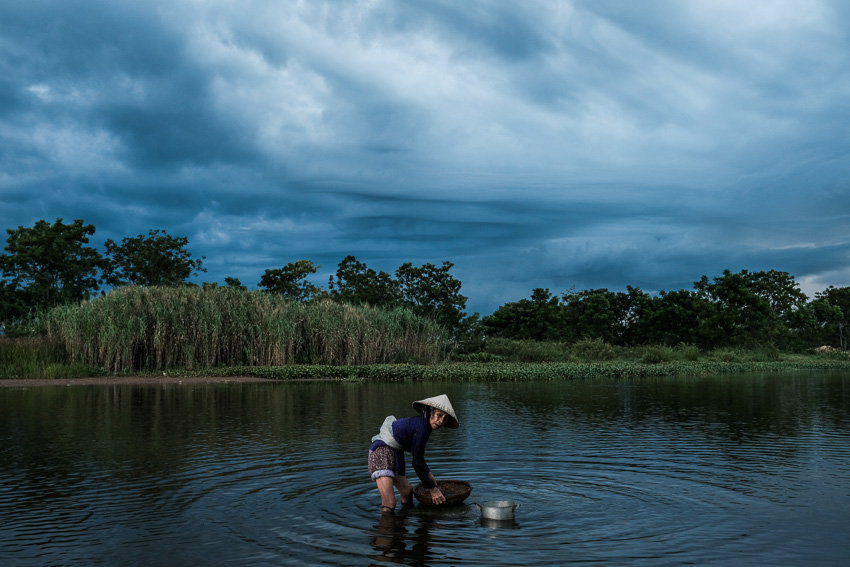
There was a great light coming from my left side, bringing details on her and her face. There also were some great textures in the background clouds.
What I didn’t like about this image was the strong visual weight of the bushes on the horizon. A lot of dark green details that didn’t say much about my subject. Also, it was only one woman, and I felt my composition lacked dynamism, because of the middle placement.
After camera settings and composition, photography is about telling stories. And the more elements you can add to your frame, the more interesting your story can be. The trick is that more elements make a clean composition more difficult to achieve.
The main idea here was to keep the dramatic sky as our background. Not only it added the drama but having a clean background will help you add more elements as subjects and still give you a clean image, as we already discussed here.
As there were two women working next to each other, why not composing with both of them? The most logical way for me to place two subjects in my frame is to have them balance each other on each third of the frame. And that meant, of course, getting closer.
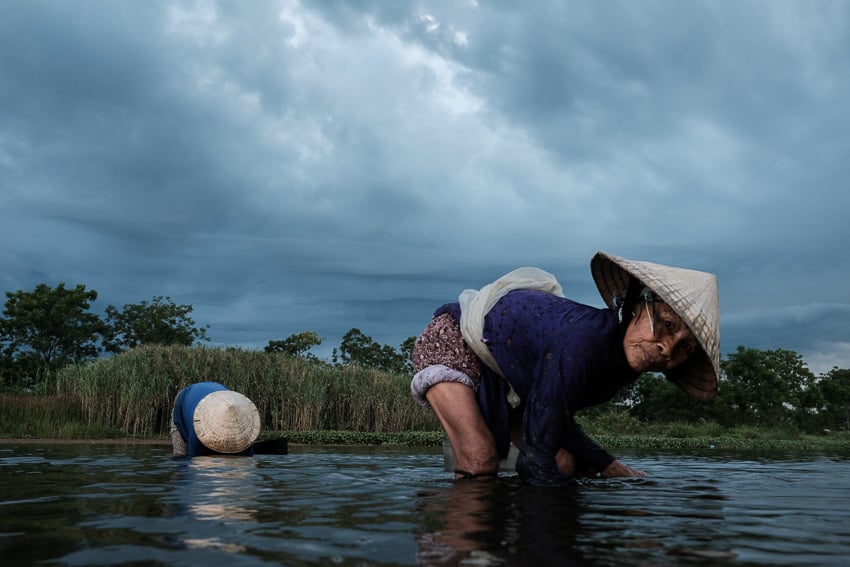
Also, going down low on the river gave the bushes in the background less visual weight, making them appear smaller.
So here I managed to clean up the background a little and to add more dynamism using the rule of thirds and having both my subjects creating a thread through the frame.
But, and there is always a but, things were a bit too flat to my taste. I like my compositions the way I like my music, and I am not satisfied if things do not go up and down, low and high, soft and hard.
The problem here is that the women were spending most of the time bent over the water, being on the same level, so it was hard to achieve at that moment. So I tried something else.
Because I found the bushes in the background distracting, I tried to get rid of them by shooting from a higher vantage point. Also, as the women were moving, they placed themselves on the same line as I was raising the camera.
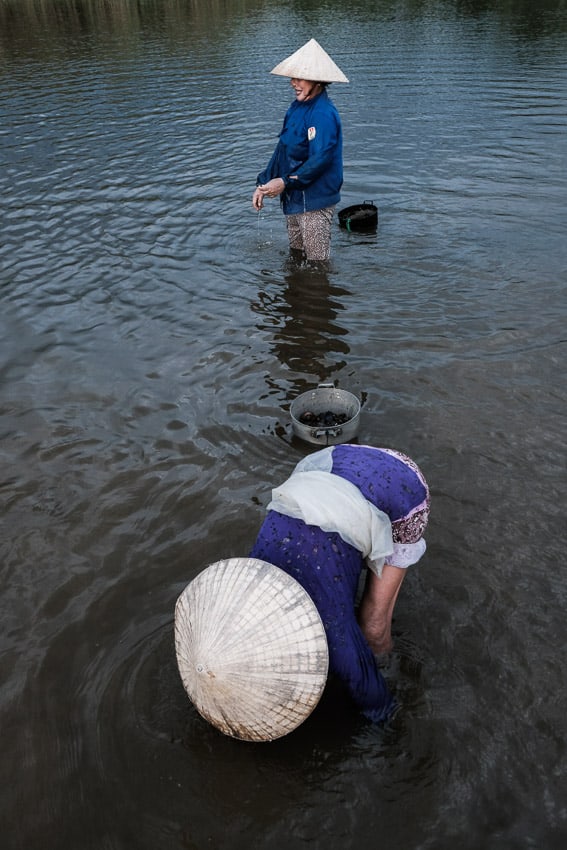
A little too simple and predictable, I decided to go back to my first idea of making the image as dynamic as possible.
To me, a dynamic composition should be very dynamic. Not only the way your eyes travel through the frame from left to right, but they also have to go up and down. Like a mountain range, if you see what I mean.
When photographing people, there is an easy way to achieve that: getting close to one of them. By getting very close to someone, they will appear bigger and higher than the others, creating this up and down lines.
Look at the difference between both images below:
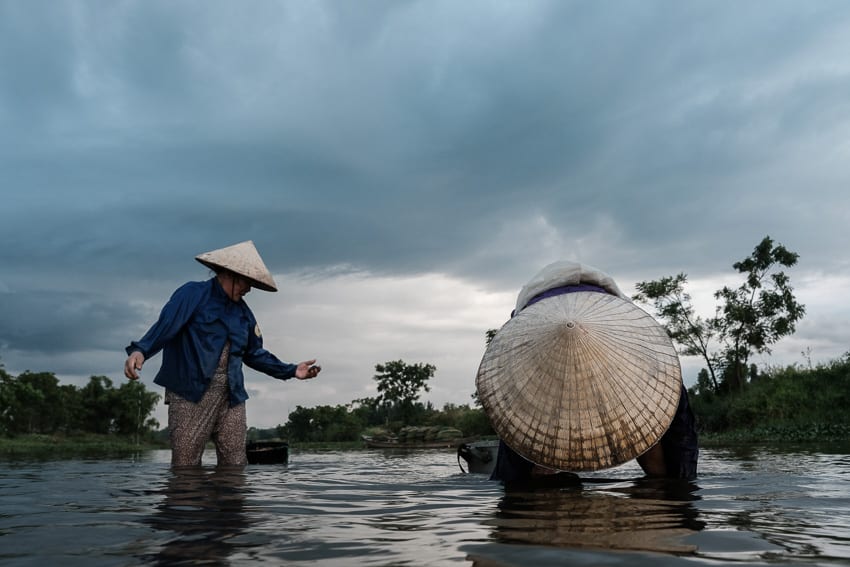
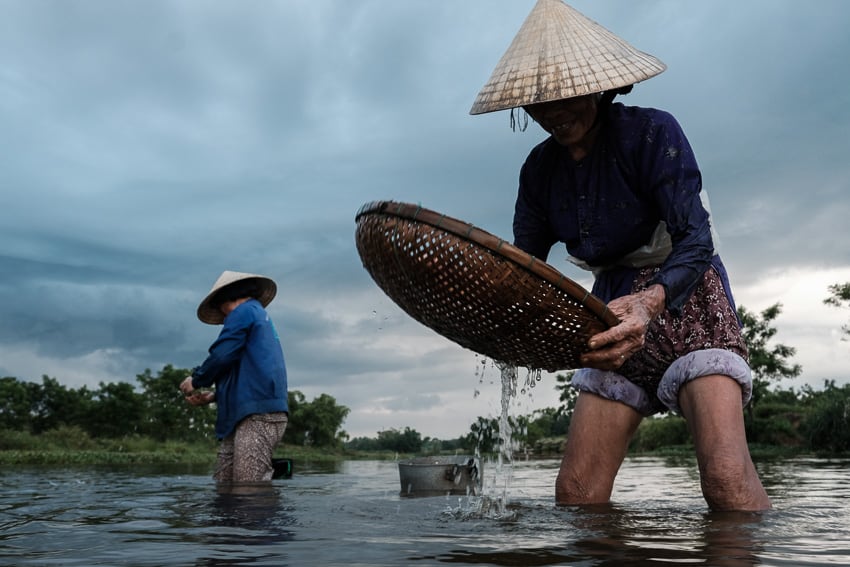
As I was closer to the lady on the right, she became much higher than the other lady as she stood up. This helps to spread the visual weight of your elements through the frame, also defining the priority among your subjects. Being closer to me, bigger, and facing me, I made it clear that she was my main subject.
I also really liked the water falling from the basket, adding even more dynamism to it. But something bugged me. First, I didn’t frame properly and cropped part of her hat. Second, the other lady in the background got completely disconnected by turning her back on me.
So I stayed and tried some more.
Why do you think I love photographing conical hats so much? They create amazing lines, almost like arrows, pointing in other directions, helping lead the viewers’ eyes through the frame. This is what I had been waiting for on this last image, and both women had a slight change in how they stood to create a more dynamic, bouncing element.

Now leaning forward, my main subjects wasn’t a straight line anymore, but a curve line that is leading us towards my second subject, thus linking each other.
But tell me, what would you have done?

subjects – location – lighting … wow! …… I guess I wouldn’t want to get my feet wet and possibly stand on a nasty so I’d be looking for my long lens 🙂
Possibly older than you young bucks too so just lazy .
The problem with the long lens is the lack of creativity it creates because of the limited points of view. So getting wet helps in that case, and also makes it more fun to interact with the people.